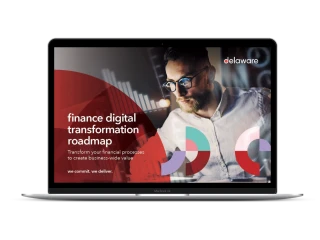Tips for a smoother financial reporting and
accounting closing process
The financial close delivers reports and insights that are most crucial to the growth and operation of your business. However, due to their complexity and detail, they are often among the most dreaded of corporate activities. But by standardising procedures, developing good communication strategies, and leveraging robust accounting software solutions, businesses can ease the process, making it more efficient.
Identify inefficiencies and error-prone accounting processes
While digitalising and modernising current accounting practices, midmarket businesses can use this opportunity to build a task force of representatives across the departments. They can be given a set of risks and issues to look for. These findings could be consolidated and assessed to better depict where there is room for improvement.
This exercise can unearth bottlenecks and delays but also calls attention to activities still being done in silos on manual spreadsheets. This process sets the stage for developing SOPs and the roll-out of more connected and automated accounting tools.
Support SOP roll-outs with good change management practices
While the accounting team is responsible for a smooth financial close, they depend on every department to get this done. Suppose departments are expected to deliver with speed and accuracy. In that case, the company must ensure that everyone across the business is on the same page.
Successful midmarket businesses often start with a good change management strategy. Communicating the importance of standardising these financial tasks and laying down protocols of who owns what and when. As these SOPs are being created and rolled out, intelligent financial management tools such as Cloud ERP could be introduced to support these tasks.
Implement and support a ‘soft-close’ accounting process
“Continuous accounting” means that instead of all the departments scrambling on the 29th of every month, automated workflows can be established to spread financial close tasks evenly throughout the reporting period.
Automation can help significantly streamline this process with mobile apps and pre-defined templates. Together with the cloud, they can be gathered and integrated with daily cross-departmental data in real-time. This helps avoid the month-end panic and empowers teams to spot and rectify errors early. Finally, with books kept current, businesses can perform a “soft close” monthly to avoid shocks or spot opportunities.
Automate and digitalise the financial close process
With an ERP system that can provide cloud-based financial solutions, midmarket businesses can reassign valuable time. Teams no longer need to spend hours manually performing tasks and making sense of messy data. More time can be devoted to strategic and skilled activities that will benefit the organisation, allowing it to grow and pivot quickly in the rapidly changing market.
Going on the cloud means delivering real-time dashboards that allow executives to customise reports and gain insights any time during the month – from whenever and wherever. It also gives the accounting team access to information across the business, using tools that automatically integrate and standardise disparate data sets and provide them with a command base from whence to aggregate and analyse data from across the enterprise.

